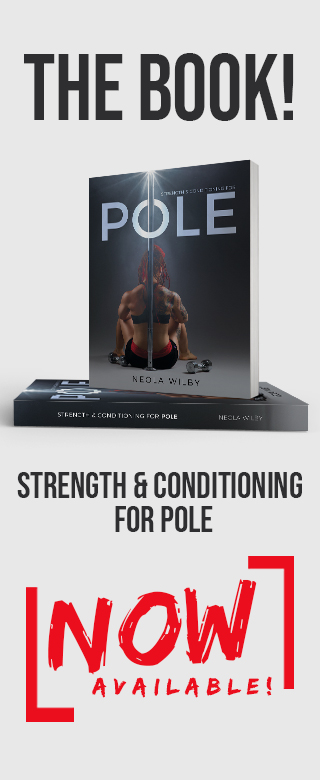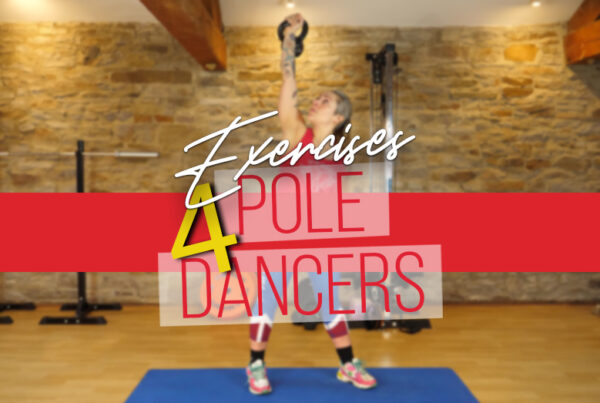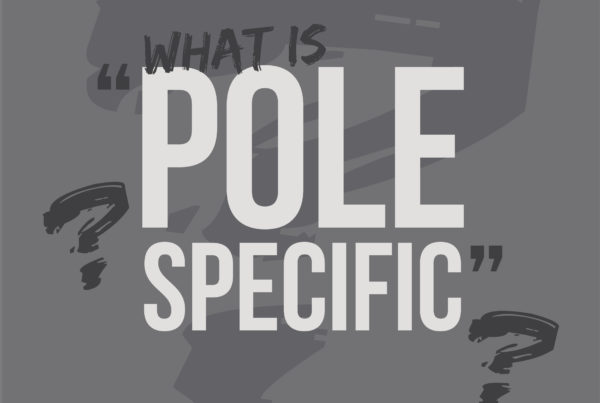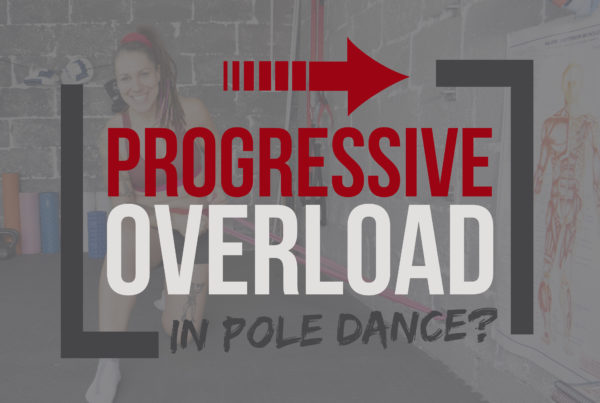Today is Sunday – the official ‘day of butts’ for pole dancers around the world. So, it feels appropriate that I’ve sat down on my tush to write all about glute strength and why we need it to kick ass on the pole. Spoiler: it’s about more than achieving those awesome peachy #sundaybumday pics…
What is hip extension and why is it important for pole dancers?
We spend most of our lives in a seated position—working at a computer, driving, sitting on the sofa—with our hips flexed.
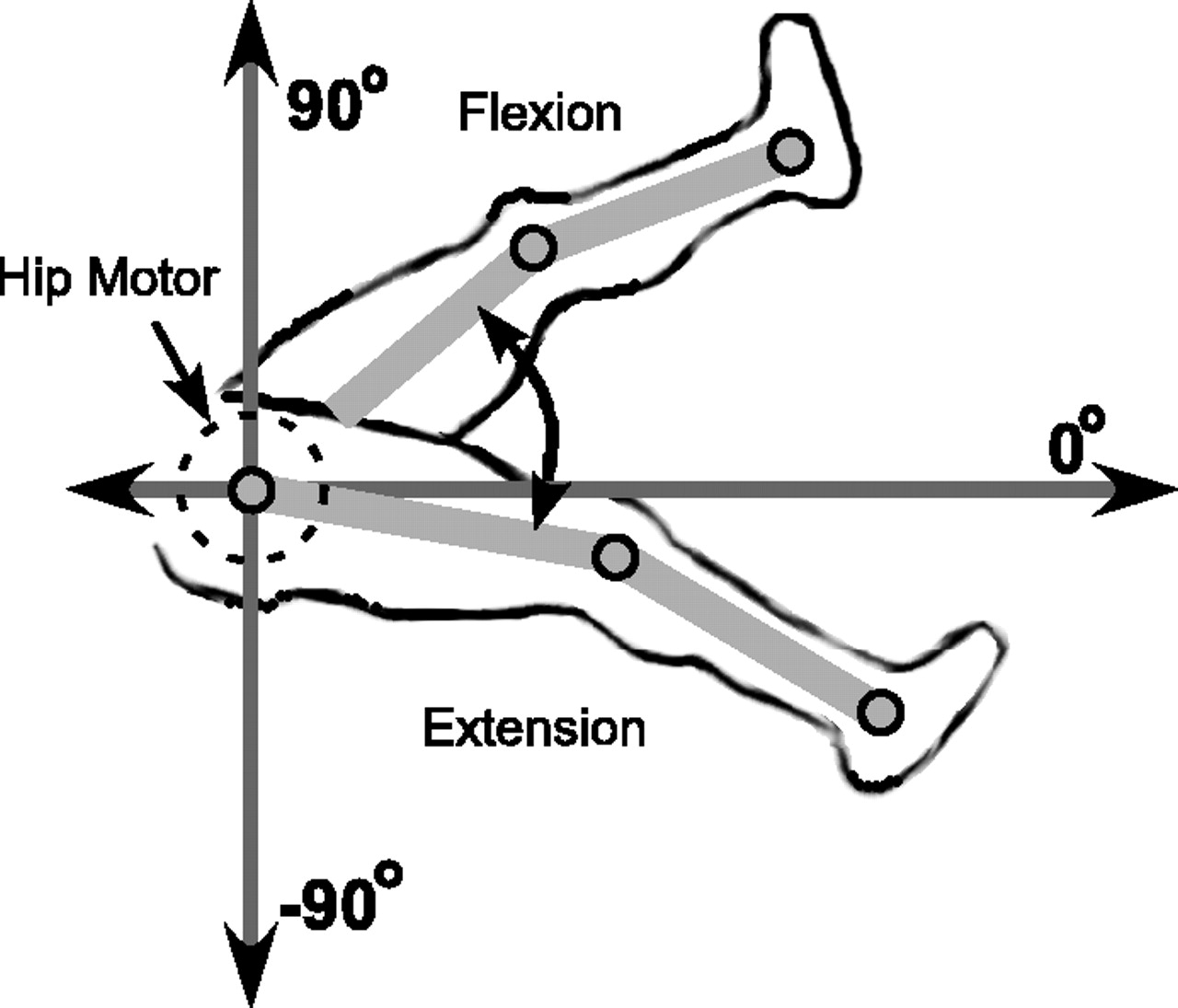
For most of us, after 7 or 8 hours sat at a desk with our hips in flexion, we get in the car, drive to pole class (again, with our hips in flexion), then spend the next hour or two trying to get our hips to do exactly the opposite – extension!
Hip extension in pole dance
And, boy, do we do a lot of hip extension in pole! Here are just a few examples:
- The leg that’s away from the pole in a butterfly
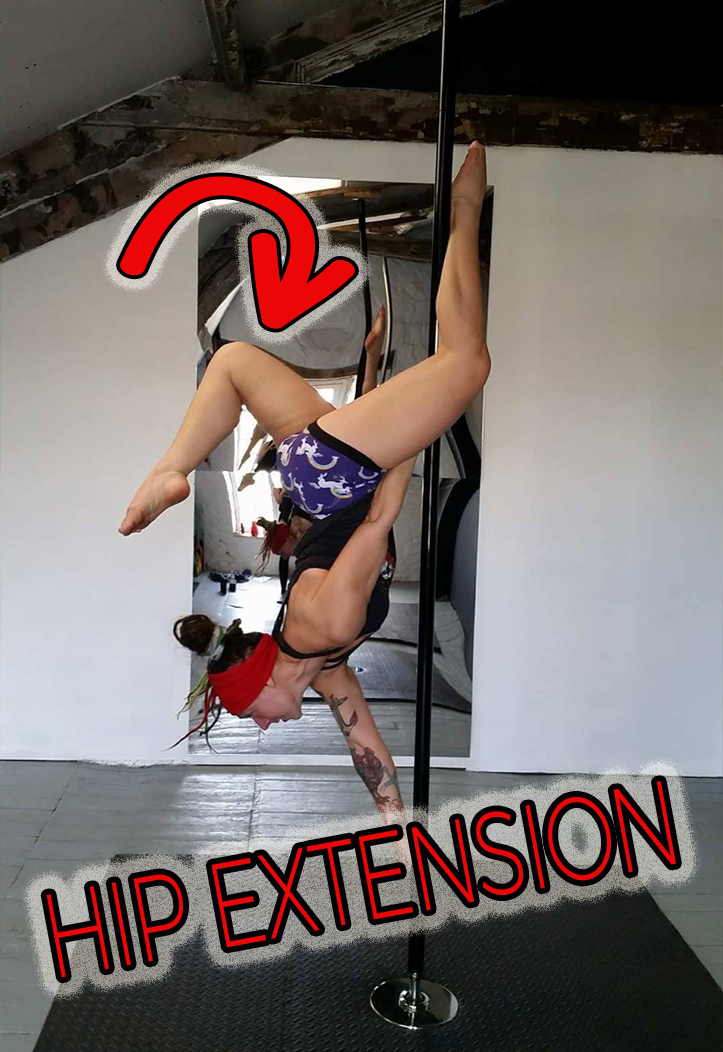
- Any bridge based moves
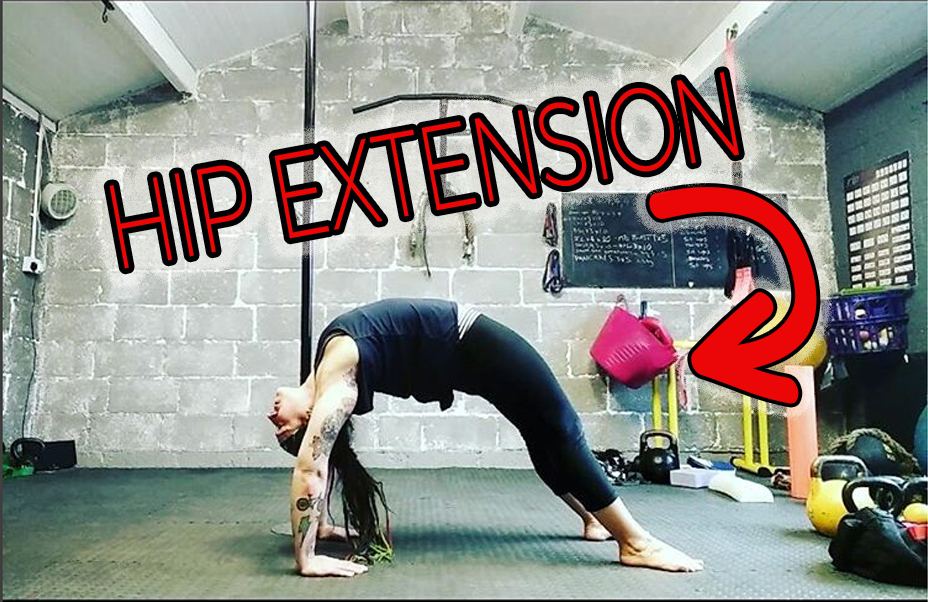
- Any split-based moves, even if you’re not in a full split – like a half Jade/Duchess.
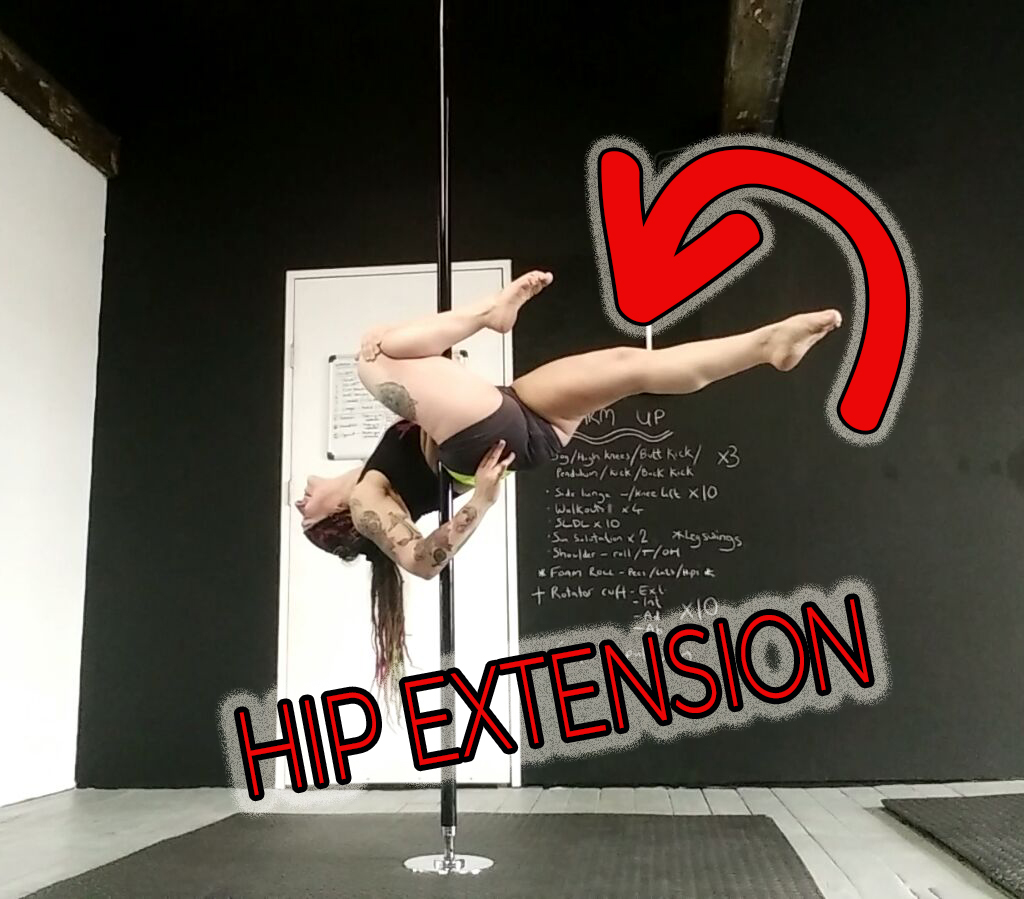
- Basically, any move where you have to grab your foot with your hand and push the hips forward… Allegra, Yogini, Ballerina…
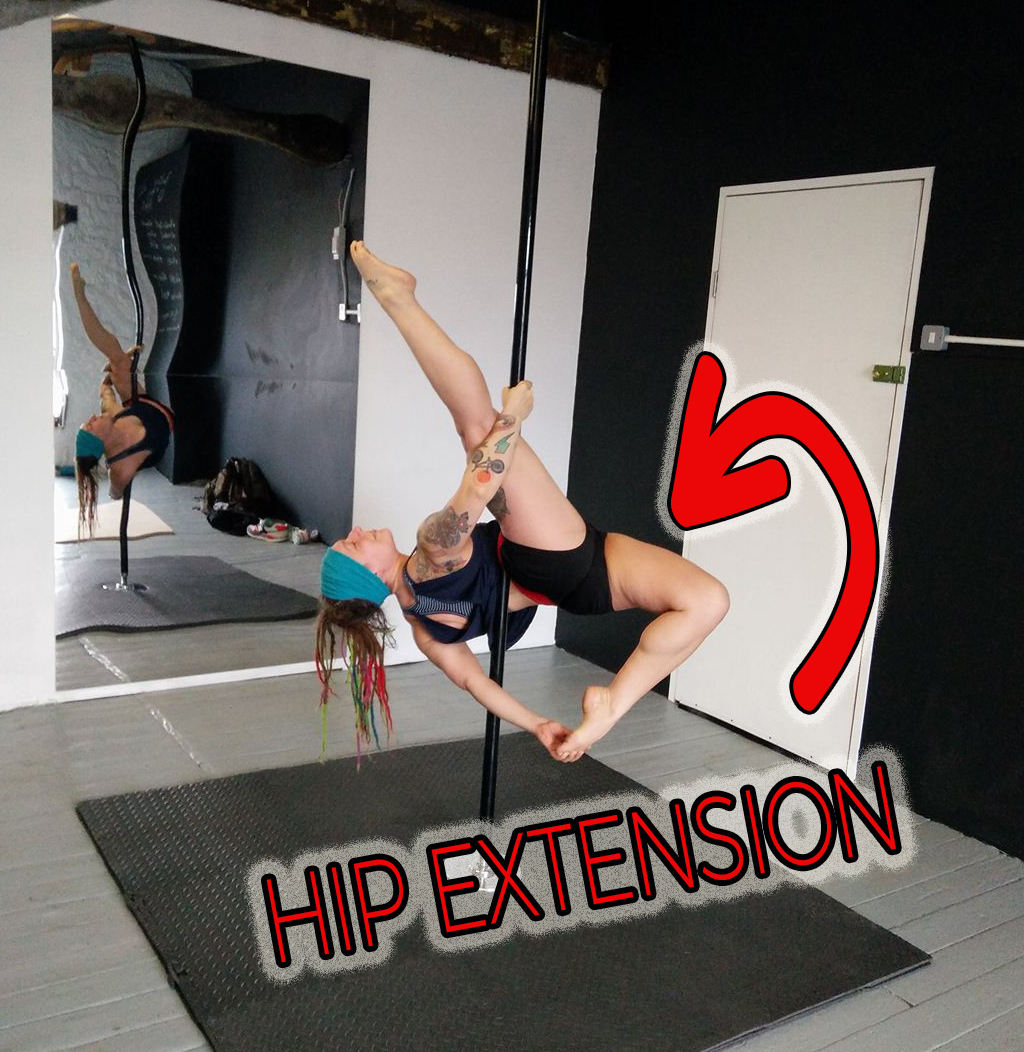
…you get the idea!
But, because we’re so used to spending all day sat on our peachies with our hips in flexion, we tend to end up with tight hip flexors and, conversely, with underactive glutes (the glutes are the primary muscle group responsible for hip extension), which can be bad news for those flexi pole goals. ☹
Glute strength combined with good hip mobility are both key to improving the lines of those hip-extension based moves. Not only will it mean that you don’t have to shout “can someone pass me my foot?” every time you attempt a ballerina, but strong, engaged glutes can also help take pressure away from your lower back when you need to extend your hips, so you can use the full range of hip extension available to you rather than just relying on arching your lower back to acheive those shapes. Long term, glute strength can help make you a more bullet-proof pole dancer and reduce your injury risk, too! Magic!
The antidote for the deskbound poler
So this is why I usually include lots of lovely hip extension and glute activation exercises in my training programmes for pole dancers.
There are some awesome traditional gym-based hip extension strength exercises, like barbell hip thrusts and kettlebell swings (which are particularly great for more advanced pole athletes who want to work on more explosive hip extension for leaps into splits and dynamic drops). I often include both of those in my strength programmes, depending how experienced my client is in the gym, but today I want to show you a great activation/mobility drill which you can incorporate into your warm ups for gym or pole.
It’s called the Cook Hip Lift and it is universally awesome for pretty much all pole dancers, and it’s my first port of call for those who want to focus on hip extension and glute strength.
Why do I love this exercise for pole dancers?
- It’s unilateral (one side working at a time), which reflects how we do things on the pole (as you can tell from the images above, we usually have one leg extending with the other flexed).
- The bent leg forces the spine into slight flexion, which means you can’t cheat and use the lower back, so it really helps to isolate and zone-in on the glute muscles, without allowing you to cheat and use the lower back.
- Because we spend so long sat on it, our glutes can get kinda lazy. The Cook Hip Lift helps re-train the mind-muscle connection so you can fire that glute up when you’re about to go pole-super-hero mode!
I usually have my clients do a couple of sets of 10 slow repetitions on each side as part of the mobility section of their warm up, whether they are about to hit the weights or the pole.
I include it in the warm up for 2 reasons: 1. It gets the glutes activated, ‘turned on’ and primed ready for the serious ass-kicking that’s about to go down; 2. Let’s be honest, mobility training isn’t the most exciting way to spend a workout, so I try to include as much mobility work as I can into the warm ups of my programmes. Because I’m sneaky like that.
And although there isn’t a huge volume of the exercise within any single workout, done consistently over time, used in every warm up with other mobility movements, eventually it equates to a lot of volume over time – which can have a positive impact on mobility in the long term.
If you’re interested in this kinda thing, you might also like my post on the important difference between passive and active flexibility and the impact it can make on your pole moves!
If you’d like to geek out more with me on the anatomy of pole dance, or you want more details on how to programme your hip extension training for pole, check out my books – Strength and Conditioning for Pole – and Pole Anatomy – which are both available now in paperback or downloadable ebook.
As always, just holla if you have any questions at all and happy Sunday bumday! Look after that tush and you will reap the booty rewards.




